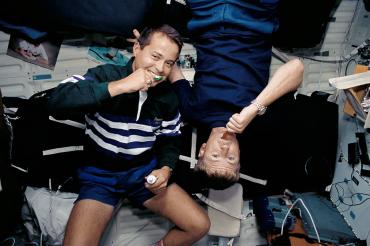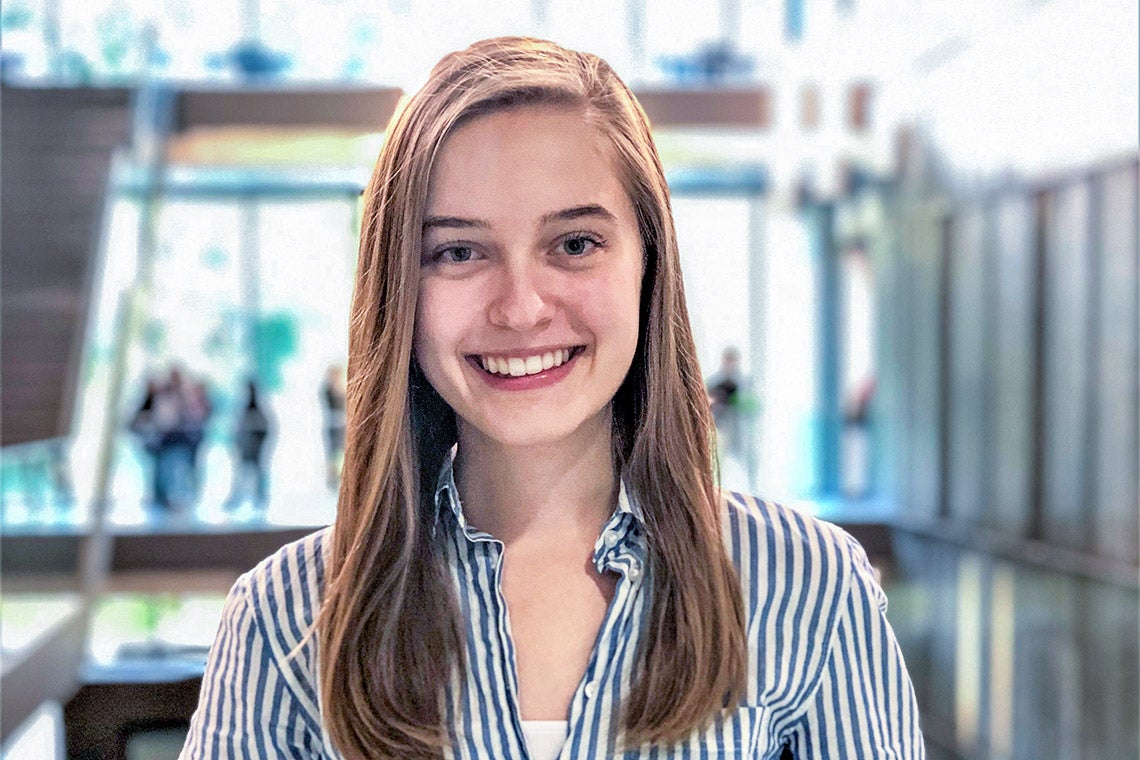Why do astronauts get cavities? U of T students drill into the data

Published: December 13, 2019
Curiosity and a passion for research is taking four University of Toronto students to the final frontiers of health and space. The student research team recently presented a paper at an international conference of space experts – the first step in a process that could inform future research into the dental woes of space travellers
Rachel Stubits, a third-year molecular biology student at U of T Mississauga, is lead author on the project, which seeks to understand why astronauts suffer more dental problems than their earthbound peers.
She got the idea for the project in 2018 when she stumbled upon a fact that piqued her curiosity.
“Dental caries – also known as tooth decay or cavities – are the single-most non-communicable disease in the world,” says Stubits. “More than 97 per cent of people on Earth will experience it at some point in their lifetimes.”
While prevention and treatment protocols on Earth are well-documented, Stubits wanted to know more about those who didn’t have ready access to treatment.
“I wondered about people who are really far removed from our health-care system,” she says. “You can’t get much farther away than space.”

Rachel Stubits and her co-researchers – two current U of T students and one alumna – presented their work at the 70th International Astronautical Congress in Washington, D.C. (photo by Saumya Mathur)
Tooth decay occurs when sugar-loving bacteria produce acidic by-products that can erode tooth enamel and, if untreated, lead to painful infections. The issue is particularly problematic for astronauts, with some studies suggesting that prolonged exposure to microgravity may increase the prevalence of dental caries.
Space agencies currently manage dental health with pre-flight assessment and prevention measures and post-flight treatments, but dental abscesses are the main medical reason behind medical evacuation from spacecraft because it’s difficult to treat in space.
The statistics behind current research warrant further investigation. “There are so many differences between humans on Earth and humans in space that could be contributing to the incidence rate of dental caries,” she says, noting that variables such as air quality, diet, hygiene or even gravity itself may contribute to the development of dental caries.
“It’s difficult to pinpoint because of the small sample size and the number of variables.”
In October 2018, Stubits joined U of T’s Aerospace Team to develop a protocol for a review of literature about the issue. Her co-authors include fellow U of T Mississauga molecular biology student Anisha Hundal, chemical engineering undergraduate student Claire Velikonja and alumna Wendy Yao, whose expertise includes global health and immunology. Their project lays the groundwork for a more detailed literature review that could inform future research into dental health in space.
The team completed the protocol project in the summer of 2019 and, with funding from the Canadian Space Agency, Yao travelled to Washington, D.C. in October to present the team’s work at the 70th International Astronautical Congress. The event draws an international and multidisciplinary group of agencies, companies, associations and institutes to advance knowledge and foster global cooperation in the development of space assets.
“It’s so exciting to have the Canadian Space Agency take a chance on students,” Stubits says.
The group’s work is an important first step in the process of solving the problem of cavities in space.
“Dental caries will become a bigger problem as the duration of space missions become longer and people are travelling in space for months or even years,” Stubits says. “We hope to solidify our understanding of the incidence rate, what is potentially causing it and the possibility of microgravity being the culprit.”
In early 2020, the team will begin work on a scoping review to discover potential patterns within the existing research. “There may be a difference in the ability of Streptococcus bacteria to succeed in causing dental caries in space without gravity,” Stubits says. “We would love to see this review help researchers in this field – especially those who study simulated microgravity on Earth – to decide what to focus their efforts on.”
“I think working on a literature review is one of the most successful research formats for undergraduate students with a bit of extra time on their hands.This is all about collaboration, and it’s something that I love about research.”



